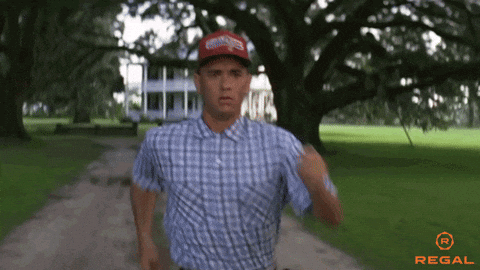
TODAY IN HISTORY | January 24th
Welcome to another edition of Today In History, where explore the history, conspiracies, and the mysteries that have shaped our world. January 24th isn’t your regular day, it’s filled with a movement that changed the landscape of California and the creation of one of Americas greatest accomplishments. Let’s dive into some history!⛺️
TODAY’S TOPICS
1848 - California Gold Rush Begins 🏞️
1935 - First Canned Beer 🍺
Extras
Napolean’s Horsepower 🏎️
Genghis Khan Family 🍼
Armless Horseman ⚔️
Royal Smell Test 👃

1848 California Gold Rush Begins🏞️
On January 24, 1848, James W. Marshall made a discovery that would change American history forever—gold. While working at Sutter’s Mill near Coloma, California, Marshall spotted shiny flakes in the American River. Little did he know, those glittering specks would spark one of the largest migrations in U.S. history and transform California from a sleepy backwater into a booming state. Word of gold traveled fast, and by 1849, thousands of hopeful prospectors, nicknamed the “Forty-Niners,” flooded the region with dreams of striking it rich.

The Gold Rush wasn’t just about pickaxes and pans—it was the ultimate gamble. Prospectors left behind families, homes, and steady jobs to chase rumors of wealth. San Francisco exploded from a small town of around 1,000 people to a chaotic hub of 25,000 seemingly overnight. Tents, saloons, and supply shops popped up everywhere, and fortunes were made not just by mining but by selling overpriced tools and supplies to the desperate. Levi Strauss, for instance, cashed in on the chaos by selling durable denim jeans to miners—a legacy that’s still stitched into fashion today.

But the Gold Rush wasn’t all glitter. Many prospectors found fool’s gold instead of fortune, and the influx of settlers tarnished Native American communities, devastating their way of life. Despite its darker side, the Gold Rush paved the way for California’s statehood in 1850 and cemented its identity as a land of opportunity. Even now, the phrase “California Dreaming” owes its roots to that wild era of gold fever, where fortunes were made, lost, and forever mythologized.
🤖 Ai Depiction of Event

On To The Next Story!!!

1935 First Canned Beer🍺
On January 24, 1935, history cracked open a cold one when the first canned beer made its debut in Richmond, Virginia. Gottfried Krueger Brewing Company partnered with the American Can Company to create something revolutionary: beer in a tin can. Before this, beer drinkers relied on fragile glass bottles or had to travel to their local bar for draft. But with Prohibition finally in the rearview mirror, Americans were ready to embrace modern convenience, and Krueger's Cream Ale and Krueger’s Finest Beer became instant icons.

The cans weren’t quite the aluminum wonders we know today. These were heavy-duty steel and required a can opener to puncture the tops. But that didn’t matter to the public—they were thrilled. Canned beer was easier to carry, didn’t shatter, and stayed fresher longer. Plus, breweries saved money on shipping. By the end of the year, over 200 million cans had been sold, and the trend was bubbling up across the country. Beer was finally portable enough to bring to picnics, ball games, and anywhere else you might need a little “encouragement.”

This innovation changed the beer industry forever. Canned beer made brewing more accessible to small-town America and helped local brands compete with national giants. Today, craft breweries owe a debt to the first steel can that helped push for change in the alcohol industry. So next time you crack open a cold one, think of Krueger’s Cream Ale and how it kicked off a canned revolution. Cheers to good beer—and no more broken glass!
🤖 Ai Depiction of Event


Extra History
Napoleon’s Horsepower🏎️
In 1812, Napoleon’s invasion of Russia wasn’t just catastrophic for his troops—it was devastating for his horses. Out of the 187,600 horses he took into battle, only 1,600 survived, while other died from the brutal cold, starvation, and grueling marches.
Genghis Khan’s Family 🍼
While the exact number of his children remains a mystery, estimates suggest he fathered hundreds, if not over a thousand. Thanks to his prolific legacy, DNA studies reveal that roughly one in every 200 people alive today can trace their lineage back to the Mongol ruler. Thats around 16 million people from one one sack. Wild!
Armless Horseman ⚔️
Colonel Sourd of Napoleon’s 2nd Lancers redefined toughness at the Battle of Waterloo. Despite having his arm amputated without pain relief the day before, he fought on horseback all day. It’s hard to say what’s more impressive—his bravery or his pain tolerance.
Royal Smell Test👃
In 17th-century Arakan, love took a bizarrely aromatic turn. The king would have women stand in the sun to work up a sweat, then perform a blind sniff test on their clothes to choose his wives. Those whose scent didn’t pass the royal nose were promptly gifted to lesser nobles—truly a love story for the ages.
Pop Quiz 📝
If you enjoy this edition of Today In History be sure to send it to a friend and force them to sign up because that’s what good friends do. Let us know how we can improve, we love hearing from all of you! Until next time, stay curious, question everything, and keep uncovering the mysteries of the past. - Zach⛺️
